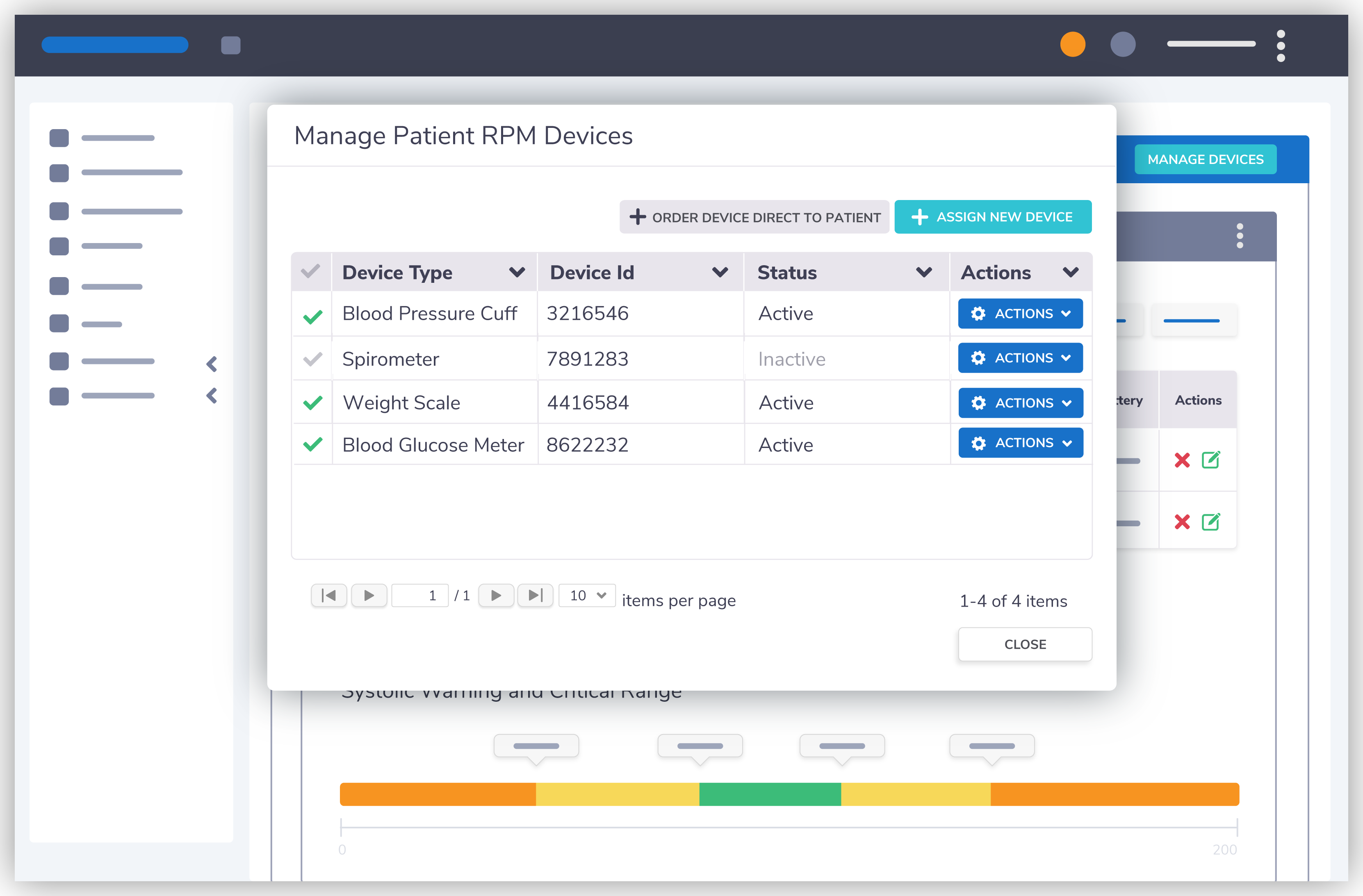Discover the Best Remote Patient Monitoring Software for Your Practice
Discover the Best Remote Patient Monitoring Software for Your Practice
Blog Article
The Future of Health Care: Remote Patient Checking Simplified
As health care continues to develop, one area that holds immense guarantee is remote client monitoring. With a focus on enhancing patient end results and streamlining medical care distribution, remote surveillance is positioned to change the sector.
Benefits of Remote Individual Tracking
Remote person tracking presents a plethora of benefits for both health care service providers and people alike. Furthermore, remote patient tracking boosts the overall top quality of care by supplying a more comprehensive and all natural sight of clients' health standing past traditional in-person sees.
Additionally, remote client surveillance can cause improved person results and satisfaction. Individuals can delight in the convenience of receiving treatment in the convenience of their very own homes while still understanding that their wellness is being closely monitored. This can lead to enhanced person engagement and adherence to therapy plans, eventually bring about better health outcomes. Additionally, remote tracking can lower the need for frequent medical facility visits, lowering medical care prices for both companies and clients. Overall, the advantages of remote person tracking are clear, making it a useful tool in contemporary healthcare delivery.
Technology Driving Remote Surveillance
In the realm of modern-day health care, technical innovations play a critical role in driving the development and effectiveness of remote person tracking. The assimilation of ingenious modern technologies such as wearable gadgets, mobile applications, and cloud-based systems has revolutionized the method doctor remotely take care of and keep track of person health - rpm software. These technologies allow continuous real-time tracking of essential signs, drug adherence, and various other important wellness data, enabling timely interventions and customized treatment strategies
One secret modern technology driving remote surveillance is the Internet of Points (IoT), which makes it possible for seamless connection in between medical gadgets and healthcare systems. IoT gadgets such as smartwatches and cordless sensing units accumulate and transmit person data to centralized systems, promoting remote tracking from anywhere in the globe. Artificial intelligence (AI) and artificial intelligence formulas better enhance remote tracking by examining substantial amounts of client information to detect patterns, anticipate wellness trends, and alert doctor to possible issues.
Effect On Medical Care Delivery
With the assimilation of innovative technologies driving remote client surveillance, the effect on healthcare delivery is ending up being progressively extensive and transformative. Remote client tracking permits healthcare service providers to use more tailored and aggressive like patients, causing enhanced health outcomes and reduced medical facility admissions. By from another location tracking crucial indications, symptoms, and medicine adherence, health care specialists can intervene early, protecting against issues and enhancing the general high quality of treatment.
Additionally, remote monitoring improves access to medical care services, specifically for individuals in underserved or rural locations. Patients can obtain continuous surveillance and support from their homes, getting rid of the need for constant in-person check outs. This not just saves time and lowers costs for both individuals and healthcare centers but likewise decreases the risk of direct exposure to contagious conditions, an important factor to consider in the current health care landscape.
In addition, remote client surveillance makes it possible for health care providers to much better allot resources and prioritize treatment based upon real-time data. By determining risky clients and interfering promptly, health care distribution ends up being extra effective and effective, inevitably leading to a much more lasting and patient-centered healthcare system.
Improving Individual End Results

Additionally, RPM enables for aggressive monitoring of persistent problems, lowering the chance of intense worsenings and health center readmissions. Patients gain from increased benefit and comfort, as they can get care in their very own homes while remaining connected to their health care companies. This continual surveillance not only enhances client complete satisfaction but also cultivates a sense of empowerment and engagement in their own health management.
Future Trends in Remote Surveillance
Welcoming innovative innovations in remote client monitoring is forming the future landscape of health care delivery. The future fads in remote surveillance are expected to transform the way medical care is supplied, making it much more efficient and patient-centric. One considerable trend is the raised use of wearable devices and sensing units to gather real-time information, allowing doctor to keep an eye on clients continually without the requirement for regular in-person gos to. These devices can track essential signs, medicine adherence, and task levels, offering an extensive sight of the individual's health condition.

In addition, telehealth platforms are coming to be much more innovative, enabling for digital assessments, remote medical diagnosis, and remote person monitoring done in one integrated system (software for remote patient monitoring). This alternative strategy to remote tracking is simplifying health care distribution, enhancing client contentment, and eventually, boosting general high quality of treatment
Conclusion
To conclude, remote patient tracking uses numerous advantages in health care distribution, driven by advancements in technology. It has the prospective to improve individual results and transform the way healthcare is delivered. Future trends in remote surveillance will certainly remain to form the landscape of medical care, supplying possibilities for even more tailored and reliable client care.
Remote patient monitoring presents a wide range of advantages for both medical care providers and patients alike. Additionally, remote patient monitoring boosts the total top quality of care by offering a more extensive and holistic view of patients' health standing beyond conventional in-person check outs.
Moreover, remote person surveillance can lead to better individual outcomes and click this link contentment. Remote individual monitoring permits healthcare service providers to supply even more customized and aggressive care to patients, leading to boosted health end results and minimized medical facility admissions. Remote person tracking (RPM) plays a significant duty in improving client outcomes by giving continuous, real-time information that enables health care carriers to intervene immediately and adjust therapy strategies as needed.
Report this page